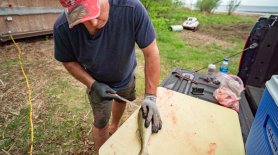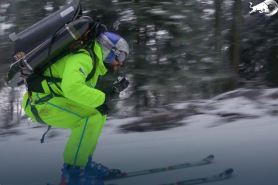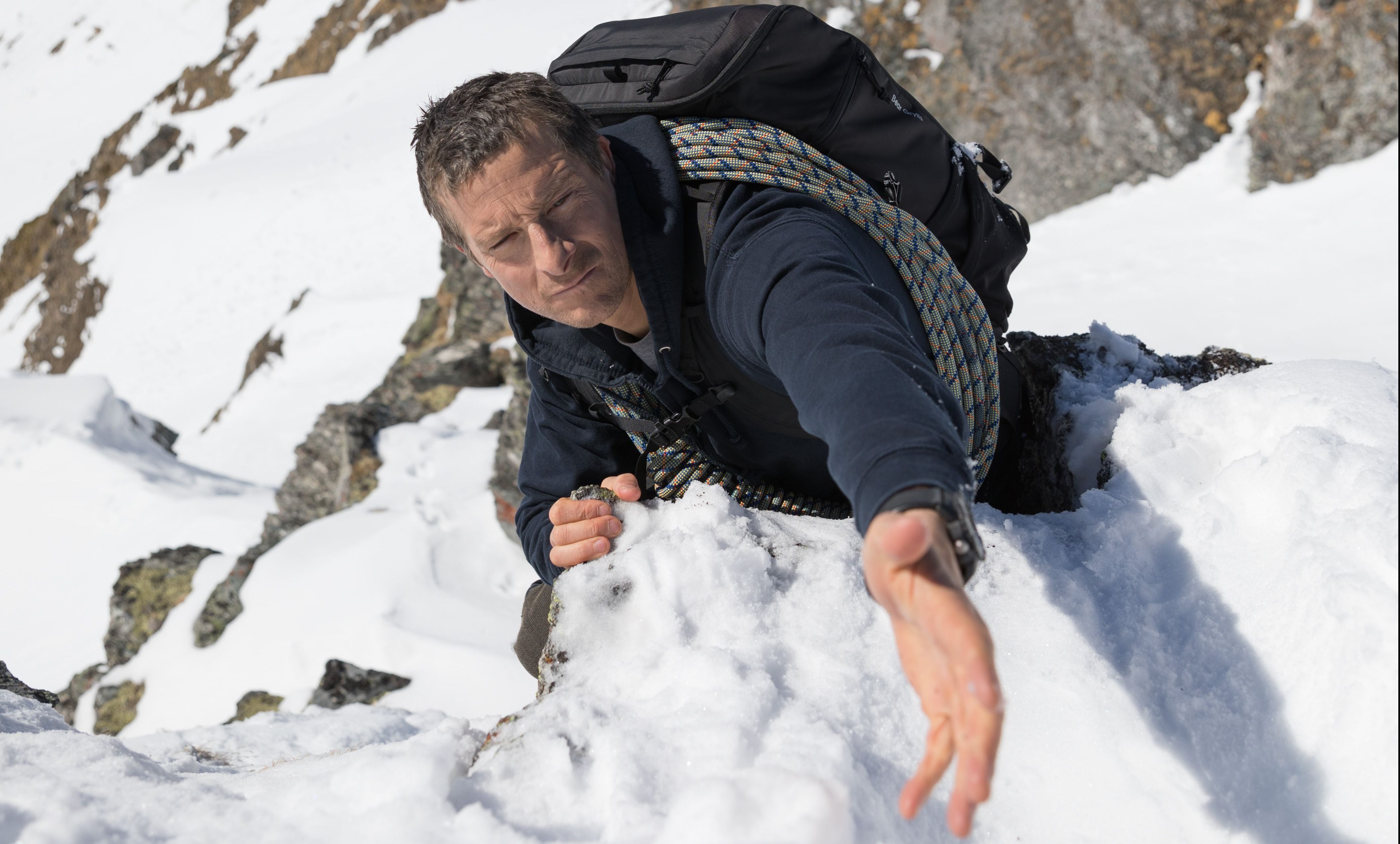

Obviously, Bear Grylls is no stranger to freezing temperatures—having successfully climbed Everest and survived plenty of other extreme weather scenarios, he’s first to admit that cold climates are not to be messed with. Still, even if you’re exploring winter vistas from the heated comfort of your car, he has some sage advice to ensure your wheels—and driving skills—are worthy.
Videos by Outdoors with Bear Grylls
1. Invest in snow tires or chains
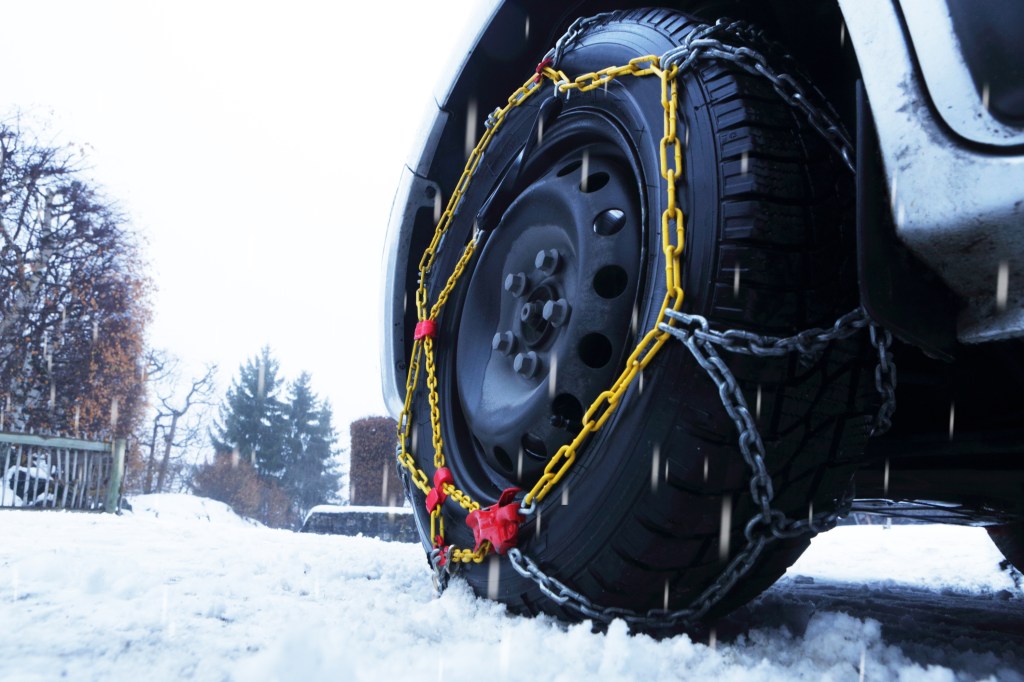
Aside from always traveling with a well-stocked winter emergency kit, you’ll want to make sure your wheels have plenty of traction. If you can get snow tires fitted to your specific vehicle, do it, Bear says. If that’s not possible, adding snow chains is a good option. Snow chains come in a variety of sizes, so be sure to get the right size for your vehicle and ideally for all four tires. Just keep in mind that the time to try to put them on is not when the weather has already started to get treacherous. Pro tip: Get a lesson in putting them on before you actually need to.
2. Take the path more traveled
On snow-covered roads, drive where other cars before you have already forged a path. If there’s only one lane, keep in the center. In a two-lane situation, stay towards the outside lane so you’re further from oncoming traffic and avoid changing lanes. “Look out for black ice, especially under bridges and overpasses where snow tends to melt and then refreeze,” Bear warns.
3. Follow the 10-second rule
In icy or snowy conditions, you already know to travel slowly and farther behind the vehicle in front of you than your usual stopping distance. Bear’s rule of thumb: Leave yourself enough room to allow at least 10 sends to come to a halt, even at low speed.
4. Take hills tactically
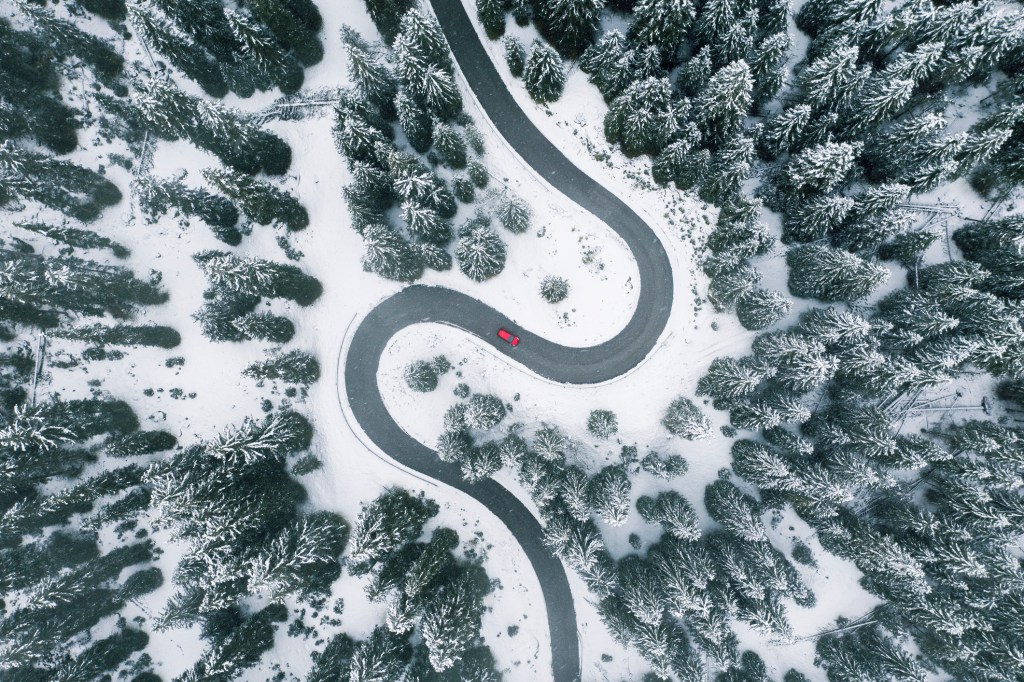
In most places, avoiding any and all hills is next to impossible. When you spot a climb up ahead, you’ll want to carefully build up speed along the flat as you approach, so you have momentum in your favor and can ease up on the accelerator to avoid the dreaded wheel spin. “Keep your foot very lightly on the accelerator,” Bear advises.
As for driving downhill, go slowly—downshifting to a lower gear can help, if it’s safe to do so—and don’t ride the brake more than absolutely necessary. “If you start to slide, you may have to release the brake completely while you regain control of the steering, then gently brake again,” he says.
5. Steer into the skid
No matter how careful you are, it’s foolish to assume you can avoid all slipping and sliding. If you skid, first and foremost, try not to panic. Avoid braking hard (or even at all) because that only makes the vehicle slide more. Instead, ease your foot off the accelerator to drop your speed until you regain control. According to Bear, if the vehicle starts to spin, “you should normally steer into the direction of the slide,” he says. “It feels counterintuitive, but it’s the best way to get the vehicle straightened up.”
More from Bear Grylls
- How to Move Across Ice
- How to Navigate Without a Compass
- How to Survive Sub-Zero Temperatures
- Bitten By a Snake? Here’s What to Do
- How to Build Shelter in a Forest or Jungle



